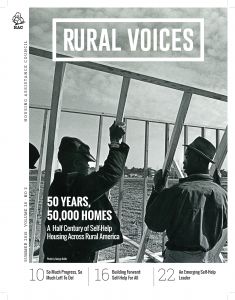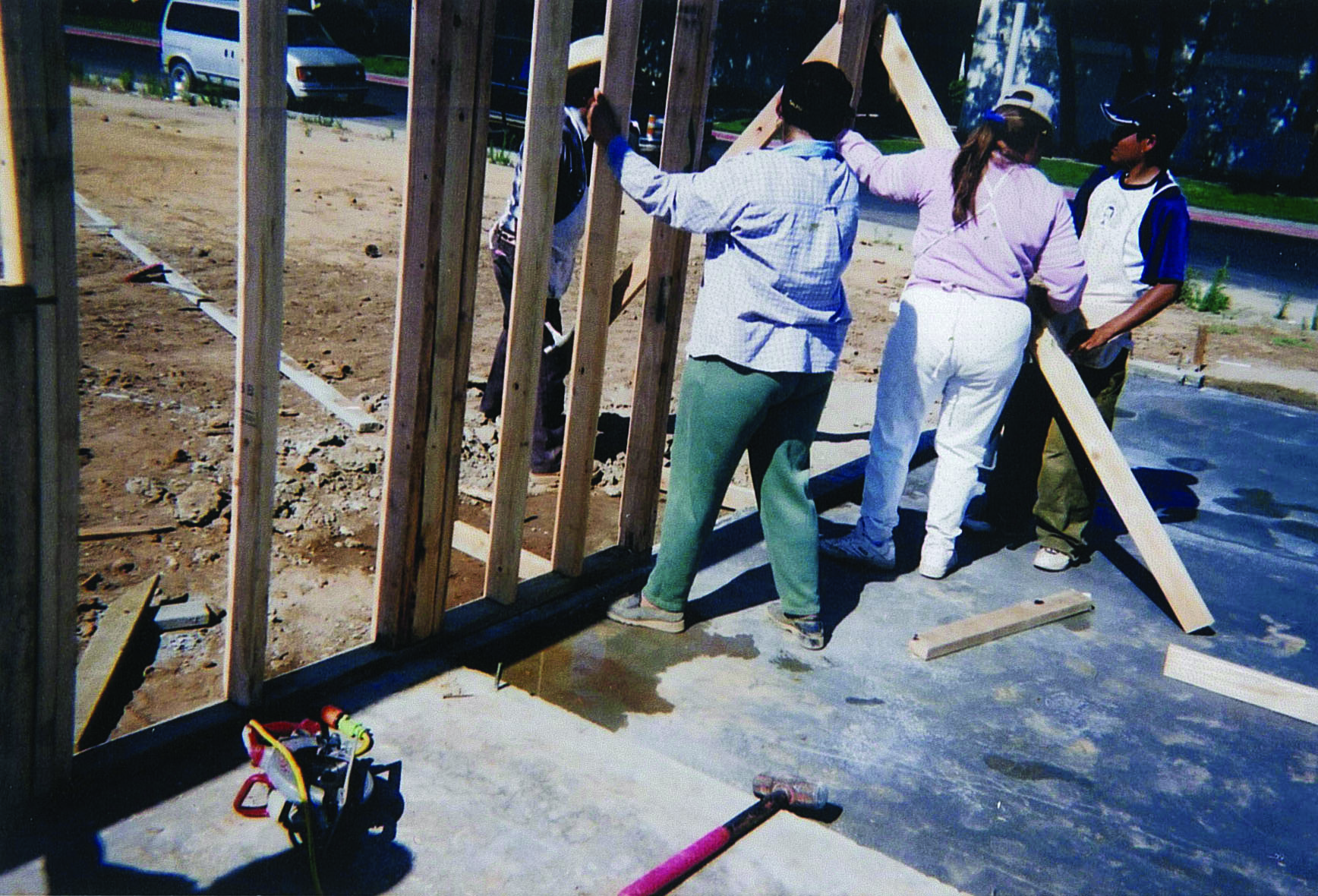50 Years, 50,000 Homes
Rory Doyle / There Is More Work To Be Done
Rory Doyle / There Is More Work To Be Done
 This story appears in the 2015 Summer Edition of Rural Voices
This story appears in the 2015 Summer Edition of Rural Voices
by U.S. Representative Sam Farr
The American dream is built on homeownership. For generations, American families have benefited from investing in their first home. It gives them a sense of community, it is a source of pride and for most homeowners it is their most valuable asset.
Unfortunately, the door to homeownership is too often closed for many individuals. That is why the U.S. Department of Agriculture’s Self-Help Housing program is so valuable. For 50 years, self-help housing has given low-income Americans in rural areas the chance to own their first home – not through a hand-out but instead through a hand-up.
I was a Peace Corps volunteer in Colombia where I saw the culture of poverty first hand. I watched it hold down entire barrios; preventing whole communities from building a better life for themselves. Breaking that cycle of poverty requires access to things like health care, food and an education. But before any of those needs can be met, you first need a safe place to sleep at night, not just a roof over your head but a home that serves as foundation for everything else.
That same cycle of poverty still exists in rural America. It prevents our communities from reaching their full potential. If we want to break that cycle of poverty, we need to invest in building more affordable housing. That means lowering the cost to construct new homes and lowering the income threshold for home financing.
Self-help housing achieves both of those goals. On average, self-help homes cost $120,000 less than a typical new home to build. And participants gain financing despite earning $20,000 less than the U.S. median income. Self-help housing achieves these dual goals by literally giving people the tools necessary to build and own their first home.

Participants in self-help housing aren’t just handed the keys to a new home. They help build it from the ground up. About 65 percent of the labor is provided by homeowners, allowing folks to start out with equity in their home – sweat equity. Imagine the pride a homeowner feels when they first cross the threshold into their new home. Now imagine how overwhelming that pride must be if they knew, not only did they build that home but they now have the skills to maintain it for life.
That new found knowledge is why self-help housing participants are more likely to remain in their home. In fact, some of the first families to benefit from the program still live in their original homes 50 years later. What they started in Goshen, California five decades ago has now helped families all across rural America realize their own slice of the American dream.
That historical connection to California is one of the many reasons I support this wonderful program. In my district on the Central Coast of California, organizations like South County Housing and Community Housing Improvement Systems and Planning Association, Inc. (CHISPA) work with new homeowners to finance and build their first home through this program. They fill a niche in our rural counties that desperately need access to more affordable housing.
Self-help housing is doing more than just building homes…it is building whole communities. Participants do not just build their home on their own. They work side-by-side with their neighbors. Families work together to build safe, affordable housing for each other to enjoy.
And isn’t that what rural America is all about? Neighbors helping their neighbors build a better life for each other. That is the foundation of a community. That is the real American dream. A dream that USDA’s Self-Help Housing Program has helped come true for 50 years.
Congressman Sam Farr has represented California’s Central Coast for 23 years. His district, known as the Salad Bowl of the World, encompasses the Monterey Bay region and the Salinas Valley. He currently serves on the House Committee on Appropriations and is the Ranking Member on the Subcommittee on Agriculture Appropriations. Prior to serving in Congress, Farr served twelve years in the California State Assembly and six years as Monterey County Supervisor. He began his career in public service in 1964 serving in the Peace Corps in Colombia.